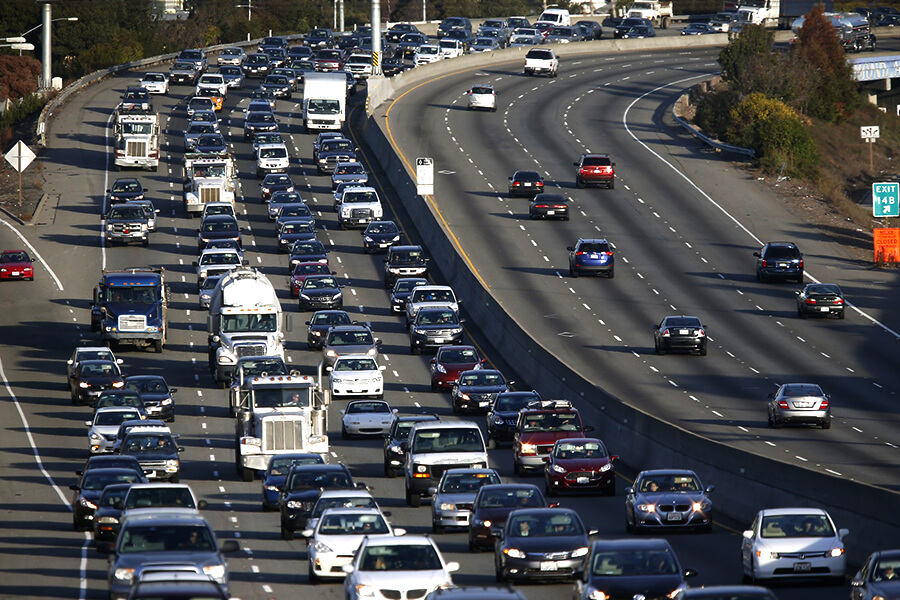Image based Vehicle Counter
Collect traffic data with high reliability

Image based Vehicle Counter
In the most image based vehicle counters, two or three virtual loops matched to the hypothetical location of induction loops are considered; when vehicles are crossing these virtual loops, vehicle counting, classification and speed measurement are done based on fill and empty states of these virtual loops. Despite the multiple competitive advantages of image based vehicle counters than other types of vehicle counters, they are involved with some challenges. One of these challenges is the needs of its image processing algorithm to be robust to illumination and weather conditions.
Contact Us to Purchase This Product
Vehicle counter should be reliable at day or night, and cloudy, sunny and rainy weather. Also, it must perform its duties well in various conditions like heavy traffic, and the presence of slow motion vehicles on the road. Shadow, low speed vehicle, stopped vehicles and pedestrian on the road can cause error in the performance of vehicle counter. The performance of many algorithms are decreased by repetitive motions of the camera because of wind and variable atmospheric conditions.
Roshan Tolou Shargh Company with TCOM brand is one of the leading companies in the field of vehicle counting and classification. TCOM by producing Iranian software in this field which is matched by existing vehicles in Iran and by overcoming the machine vision challenges, has been able to achieve high precision in vehicle counting process.
Based on tests taken from the vehicle counters, the highest vehicle counting precision in the country is registered for this company.
Overcoming to the mentioned challenges in the performance’s image based vehicle counter, vehicle counter has become a reliable tool for accurately extracting traffic parameters.
Currently, vehicle counter classifies vehicles into five classes as below:
1-Car 2-Minibus and Mini-truck 3-Truck 4-Bus 5-Trailer
This vehicle counter has the potential to raise the number of classes to a large number by keeping the classification precision which is a unique feature among the available vehicle counters.
Advantages of the image based vehicle counter
1. Counting and classifying vehicles
2. Detecting the presence or passage of a vehicle
3. Calculating the spatial and the temporal distance between vehicles
4. Calculating the instantaneous volume and the average of traffic
5. Providing different statistics and reports in the form of tables with the ability to apply a variety of filters such as time filter, date, vehicle number
6. Drawing a variety of custom graphs based on the taken and calculated data
7. Providing technical reports for the moment-to-moment operation of software
8. Fast transferring of collected data
2. Detecting the presence or passage of a vehicle
3. Calculating the spatial and the temporal distance between vehicles
4. Calculating the instantaneous volume and the average of traffic
5. Providing different statistics and reports in the form of tables with the ability to apply a variety of filters such as time filter, date, vehicle number
6. Drawing a variety of custom graphs based on the taken and calculated data
7. Providing technical reports for the moment-to-moment operation of software
8. Fast transferring of collected data
Technical specifications of the image based vehicle counter
1) Working at any time of the day
2) Using in different weather conditions and adapting automatically to sudden changes in atmospheric conditions
3) No need to speed limit for vehicles in system performance quality
4) Absence of induction sensor’s problems such as non-detection due to not be in the range of inducing or wrong-detection due to the passing two vehicles simultaneously
5) Processing simultaneously forward and backward route with different numbers of line
6) Using online through communication with the cameras and using offline through the recorded videos
7) Recording received images
8) Simple and effective graphical user interface for communicating with user for proper settings with roads and cameras
2) Using in different weather conditions and adapting automatically to sudden changes in atmospheric conditions
3) No need to speed limit for vehicles in system performance quality
4) Absence of induction sensor’s problems such as non-detection due to not be in the range of inducing or wrong-detection due to the passing two vehicles simultaneously
5) Processing simultaneously forward and backward route with different numbers of line
6) Using online through communication with the cameras and using offline through the recorded videos
7) Recording received images
8) Simple and effective graphical user interface for communicating with user for proper settings with roads and cameras


